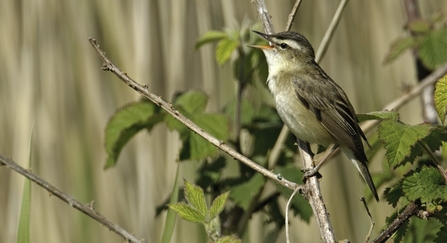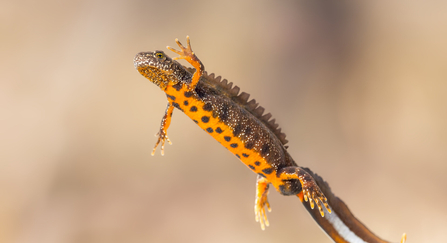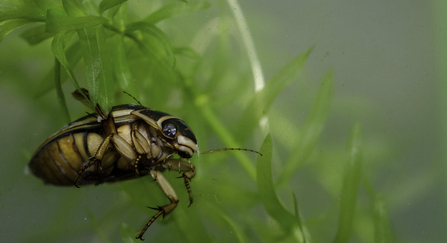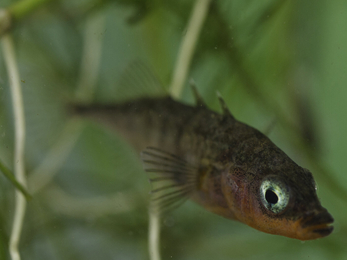Lots of surveys are taking place at the moment, with contractors, staff and many volunteers out on site. There is a variety of data being gathered, ranging from soil types and ground and water levels to more species records for New Decoy Farm, Middle Farm and Speechley’s Farm (the Peatland Project sites). Thanks to our Heritage Horizon Award, we’ve been particularly busy and, on our last ‘Peatland Progress Survey Day’ (20 March), 29 volunteers and staff were out and about, recording a variety of species, ranging from king diving beetles (a bit of a speciality of the Fens), to the familiar three-spined, and 10-spined sticklebacks, and the big favourite, short-eared owls.
Stonechat Travels 7: the king and the dragons
Great crested newt - Not Required
We have a packed programme of surveys this year, and are already looking forward to the next ‘Survey Day’, taking place on International Dawn Chorus Day (Sunday 1 May), when I will also be leading a Dawn Chorus Walk. If you fancy joining in the walk, book now, or look out for the other events we have; next month is packed full of opportunities to appreciate our wildlife, be it World Migratory Bird Day, National Moth Night, or International Day for Biological Diversity.

Sedge warbler (Acrocephalus schoenobaenus) adult singing. Norfolk. - Chris Gomersall/2020VISION
After a brief glimpse of snow last month, the mild weather has returned. The warmer temperatures we experienced have encouraged the amphibians out of hibernation, and they set off, marching towards their breeding pond of choice. The recent great crested newt survey at Ramsey Heights recorded 61 newts; an encouraging start, after all the pond restoration work done by volunteers and staff over the winter. Our newt survey at Woodwalton Fen recorded over 100 newts this week, more good news about these specially protected amphibians!
Both of these reserves are of particular note for this newt, and monitoring the populations and their movements is a key part of our annual monitoring programme. On occasion, school visits to Ramsey Heights coincide with our newt surveys, and so it is a special day for the youngsters who get to meet their first ‘water dragon’; the introductions are accompanied with many a “whoa!”

Great crested newt
This specially protected species is just one of the species benefiting from the habitat management work at Ramsey Heights.
One of the methods we use for newt surveys also does very well for recording our larger water beetles, the diving beetles, which provide more fascination for the kids. Diving beetles are not easy to catch, only popping to the water’s surface long enough to catch some air, but they are worth a closer look. We have 5 of the 6 giant predators in the Great Fen: the biggest, the king diving beetle, has yellow flashes down the side of its wing cases, the wasp has black and yellow tummy; we also have the black belly, the enigma, and the more common great diving beetle, which you might see in your own garden pond. We’ll be doing more of these surveys this year, to better understand the distribution of these species, across the Great Fen.

WildNet - Jack Perks
Now that spring seems to have sprung, corn buntings are singing from the wires again, and stonechats are also singing (a rarely heard sound at the Great Fen) from the bushes. As you will see from out monthly sightings, you may even spot a white stork flying overhead! It’s also that time of year for work on the fenland roads, so look out for the road closure in Ramsey Heights village, as you may need to head through the town of Ramsey to bypass it. But please still come and enjoy the Great Fen.
As this month progresses, we’d be interested to know if you see any stonechats during your visits. We want to find out if any of these winter visitors are staying for the spring/summer. They are the focus of this current series of blogs, stonechat travels, so it is useful information. As more bird species appear this month, to breed in the Great Fen, let us know when you see the first arrivals; we would very much appreciate any and all sighting of cuckoos in particular.
Henry Stanier (Great Fen Monitoring & Research Officer)

